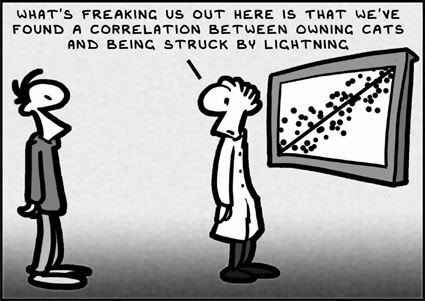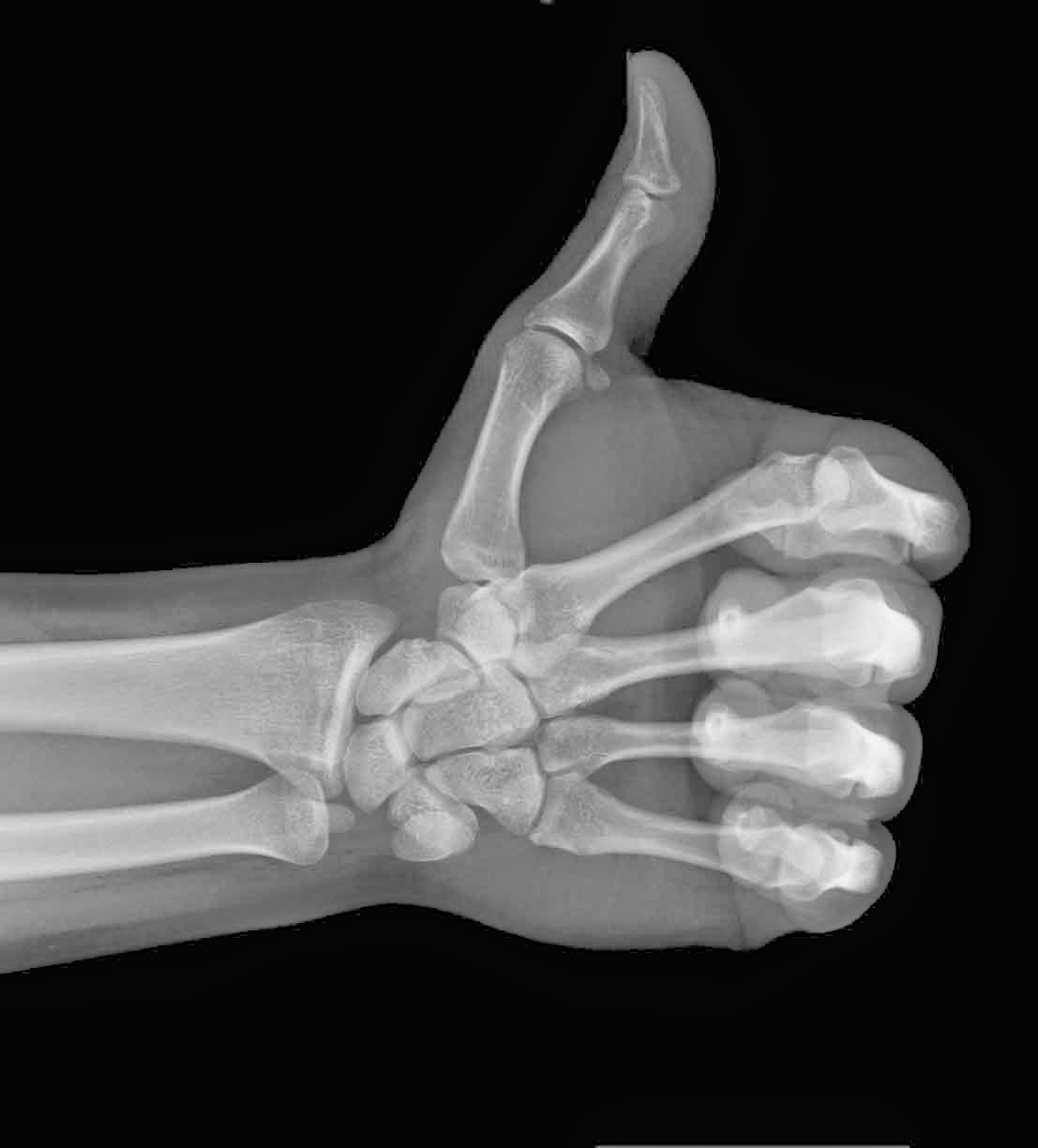So, in my last post I introduced F.I.N.E.R. as a convenient way to remember what makes a good research question. We covered F for feasible and today we will go over I for Interesting.
What is important when dreaming up a research question is to make sure that you are interested and engaged. This is what will provide you with the energy, drive, and determination to overcome the many hurdles and frustrations that will invariably stand in you way on your path during the research process.
Gwen may have No Doubt about what she is interested in. But do you? How will you gauge how interesting your question is? Easy – talk to people about it. One of the problems new researchers have with their research questions is that they Don’t Speak (great song!) with others during the planning process. Ask as many mentors, experts, family members, friends, colleagues as you can about your question. All that feedback will help you determine whether it is worth your precious time and effort to pursue that research.
Don’t be shy to ask people their opinion and don’t be take it personally if you get negative feedback. It is all part of the process. You can’t expect to have everyone interested but you can certainly try your best to have many.
 Try early on in your research career to find a Person of Interest (well maybe not that kind of person) or someone who you value their opinion and are friendly with to act as a sounding board to your ideas before you move on outside the “inner-circle”. You can even repay the favor to them for their research endeavors. Hint: choose wisely…
Try early on in your research career to find a Person of Interest (well maybe not that kind of person) or someone who you value their opinion and are friendly with to act as a sounding board to your ideas before you move on outside the “inner-circle”. You can even repay the favor to them for their research endeavors. Hint: choose wisely…
Next is N…
See you in the blogosphere,
Pascal Tyrrell
What Makes a F.I.N.E.R. Research Question? F is for…
…Fugitive? Well that is certainly how you can feel when out with your friends and knowing you should be home studying for your upcoming stats 101 exam. Not sure how that feels? Watch the trailer from the fantastic movie The Fugitive.
 Now that you are well versed in dreaming up research questions and driving everyone around you nuts, I thought I would chat a little about how you can assess whether you have a good one “on the line” or a stinker.
Now that you are well versed in dreaming up research questions and driving everyone around you nuts, I thought I would chat a little about how you can assess whether you have a good one “on the line” or a stinker.
A great mnemonic suggested by Hulley et al is F.I.N.E.R. and suggests that research questions need to be feasible, interesting, novel, ethical, and relevant. Today we will talk about the first one.
F is for FEASIBLE. When you are creating a research question you must always ask yourself: “Can I answer this question?”. There are many reasons that may stop you from completing your quest to answer a given question. Maybe not as dramatic as in the Quest for Camelot, but it is important to take note of your limitations:
1- Do you or other members of your team have the know-how or technical expertise to plan, execute, and analyze the study required to answer your question? Maybe you need to brush up on your skills before embarking on your adventure… or phone a friend!
2- Can you afford the time to complete your quest? Do you have the money to pay for it? Gold wins wars not soldiers (Game of Thrones season 1)! Always plan ahead so that your study does not get compromised or cancelled because you don’t have the money or the time to continue (summer student projects often fall pray to this).
3- Do you have access to enough subjects to appropriately power your study? Sample size calculation is a fun and challenging topic and we will address this in later posts. If you want to know how many of your classmates – say 100 – want to go camping over the weekend to celebrate the end of the school year, how many should you ask before you are confident it will be worth your effort to organize the trip? All of them? Some of them? But how many…
4- Are you asking too much at once? Is the scope of your research question too broad? Focus on the most important goals.

Don’t become a “Jack of all trades and master of none“! Aim for a better answer to the main question that you are interested in.
Next post we will move on to I…
See you in the blogosphere,
Pascal Tyrrell
The Importance of Research
There’s more to the field of medical imaging than a bunch of stuffy radiologists huddled around a couple of monitors. As I mentioned before in my previous post about the history of the imaging technique, the field has undergone a rapid technological advancement in the past century or so, improving the clinical model of visualization. But let’s take a step back from all the scientific stuff for a brief second and look at these developments in a
slightly different light.
 |
| The SparkNotes illustrated version of this post |
could go a long way. Who knows, you may find yourself presenting your findings at a research symposium, complete with nifty results and statistics to showcase your efforts.
The Order in K-OS and Who’s Dog Is It?
Did you know that Einstein is also known to have contributed significantly to statistical physics? In 1905, he proposed an explanation for the phenomenon called Brownian motion – named after the botanist Robert Brown who first described the process. Essentially, particles suspended in a fluid (liquid or gas) exhibit a random motion (path) resulting from their collision with the quick atoms or molecules in the gas or liquid. This is the K-OS or more appropriately “chaos” of the process. Have a listen to The Dog Is Mine from K-OS to get you ready for some Einstein talk.
The problem with understanding Brownian motion is that the molecules are too light to move the floating particle and molecular collisions occur way more frequently than the observed jiggles.
What is the take home message? That much of the order we perceive in the world around us is dependent on an invisible underlying disorder. Words of caution: though random variation can lead to orderly patterns, these patterns are not always meaningful. (See previous posts: Rebel Without a Cause and What Does the Fox Say for some hints on how not to be fooled)
So what is the link between Einstein and The Dog is Mine K-OS song? The dog named Einstein from the Back to the Future movie, of course!
See you in the blogosphere,
Pascal Tyrrell
The Key to Research: (Key)Words
Yes, you are not the only one, many people use Google to further explore some of the things they have come across throughout daily encounters. For each instance google is used, whether it be for a song or for neuroscience research and analysis, one thing remains in common: keywords.
Keywords are essential when searching for various types of information, and the options appearing on any search engine are dependent on the keywords given. How does one establish appropriate keywords for a search engine entry?
Faith Balshin
What Does The Fox Say?
I have often talked about “inferential statistics” in this blog. Don’t remember? Have a quick peek here If Only I Had a Brain and here It’s Cold Out Today – Please Remember to Dress Your Naked P-Value.
Back in the saddle? OK. Lately, I have had the pleasure of addressing young minds (shout out to CAGIS who were AWESOME on Saturday at our Sunnybrook Health Science Center presentation) and I thought I might talk a little about what “inferential” means to statistics.
So What Does The Fox Say? And does Ylvis have the answer? Listen to the song while you read through the rest of the post. We live in a crazy complex world that is largely random and uncertain. This is a good thing as it would be mighty boring to know how everything will turn out in the future. Imagine sitting in the middle of the forest and counting and recording the sounds of ALL animals that pass you – by species! Wow, that’s a lot of data. Now as new research scientists (don’t forget to wear your Pocket Protector before heading out into the woods!) we like ways to describe and make sense of what we observe – we simply want to understand the world better or maybe we are working on a answer to our newly minted Research Question.
Either way you are certainly thinking where does the randomness and uncertainty come into all this? Well, it exists in two places:
1- Most importantly, in the process of what you are interested in studying.
2- But also in how we collect our data (collection and sampling methods).
So you now have an incredible amount of data in your spreadsheet or on little pieces of paper in a shoe box. What now? You have gone from the world around you to data in your hand. You need to somehow capture the essence of all of your data and turn it into something more concise and understandable. You do this by finding “statistical estimators” which means performing appropriate statistical analyses. The results from these analyses will allow you to estimate, predict, or give your “best educated guess” at the answer to your research question.
So by going from the world to your data, and then from your data back to the world is what we call statistical inference.
For example after collecting many days worth of data in the woods, you find that all “furry” creatures make a a kind of barking sound whereas all “feathered” creatures chirp. Excited, you tell your friends that the next time that they are in the woods and they see a furry creature they can expect to hear them bark. However, we do not know that for sure and this is where the uncertainty creeps in.
Ylvis seems to think the fox says:”Ring-ding-ding-ding”. Maybe his data collection and sampling technique was different to yours. This contributes to error and we will talk about this in a later post.
Hopefully you do not feel like you are in the movie “Inception” and… we’ll see you back in the blogoshere soon.
Pascal Tyrrell
A Crash Course in Medical Imaging
Oddly enough, there’s been a surprising lack of content about medical imaging on a blog with medical imaging in its title. So in order to fill that void, I’ll be providing a brief history on the development of the clinical technique used to visualize the human body.
The advent of medical imaging dates all the way back to 1895, following the discovery of X-rays by the German physicist, Wilhelm Conrad Roentgen. The first X-ray picture was then produced, detailing the skeletal composition of his wife’s left hand. However, the actual quality of this imaging process was still very primitive, only allowing for the visualization of bones or foreign objects.
 |
| Much to Dr. Roentgen’s pleasure, Mrs. Roentgen had not discarded her wedding ring |
- Ultrasound – Uses sound waves that are able to penetrate cellular tissue. Once they reflect off the body’s internal organs, the vibrations generate an electrical pulse which can then be reconstructed into an image.
- PET-CT Scan – Positron emission tomography (PET) uses compounds that emit positrons when they decay rather than gamma rays. It is now combined with a computed tomography (CT) device to generate a high-resolution image displaying sectioned layers of the scanned area.
- MRI – A Magnetic Resonance Imaging scanner runs a strong magnetic field through the body, aligning hydrogen protons. As the protons return to their original position in the atom, they generate radio waves, which are then picked up by the scanner and used to create an image based on signal strength.

Fast-forward to present day and over 70 million CT scans, 30 million MRI scans and 2 billion X-rays have been performed worldwide! The field of medical imaging is still growing by the day, with ongoing research leading to new developments.
Thanks for reading,
Researcher’s Dream: Katy Perry Edition
Baby Steps and What About Bob?
I had the pleasure of addressing the students from the SciTech program at Tomken Middle School last week. Bright, enthusiastic, and interested in science… all 165 of them! I was there to talk about our sister program – Medical imaging Buddies. Remember the MiB movies? Very funny. Have a quick peek for fun. I’ll wait here.
So the question is always: “what do I do to get started?”. Believe it or not this applies to whether you are a 10 year old SciTech student or a radiologist on faculty with our department. I have been doing this for a while and I would like to share some encouraging suggestions that you may find helpful:
- Read this blog! OK, so I am shamelessly promoting my own program. But it is a perfect place to start. Easy reading, no commitment, anonymous, informative, and best of all FREE! Look for more resources like this one.
- As you are thinking about what has been said in the various posts think of what a next step could be that would move you closer to your goal of becoming a research scientist and at the same time not trigger a fight or flight response. Take Baby Steps just like in the movie What About Bob? What a hilarious movie but the small steps to slowly move you forward is no joke.
- Start telling people about who you are becoming. Share with them some of your achievable and positive goals. This way they will be able to encourage you when you need a little push AND be proud of you when you succeed.
- Don’t be afraid of failure. It is simply an unwanted outcome. So what. Learn from it and move on.
- Finally, don’t be a silo (unless you are Bruce Cockburn and singing If I had a Rocket Launcher). Be a team player. Remember to always bring something of value to your team. At first, this may just simply be positive energy and enthusiasm – good enough for my team!
Rebel Without a Cause… Or Maybe?
OK, enough with stats. Let’s talk a little about causality. You have been patiently wearing your pocket protector for a couple of months, asking the right questions all the time, and diligently reading this blog to glean as much information as possible to become a research scientist.
So what now? Do you feel a little like a Rebel Without a Cause? You are asking questions that are interested in describing an association of interest. How about the association between watching horror movies and myocardial infarction (MI). One possibility is that watching horror movies is the cause-effect of an MI. You’re thinking: sure but there must be other explanations. You are right! Actually there can be another 4 rival explanations:

1- By chance alone you observed an association in your data. This is a spurious association.
3- Effect – cause: having an MI is the reason (cause) for watching horror movies – reverse to what you were thinking.
4- Confounding: watching horror movies is associated with a third factor that is the cause of MI. Say eating all those unhealthy snacks during the movie.
And of course don’t forget your initial “gut feeling” cause-effect: watching horror movies is a cause of MI.
Phew! That is a lot to think of. So what is important to remember? When designing your study to answer your question, you must always consider how to avoid spurious associations and concentrate on ruling out real associations that do not represent cause-effect. Especially those due to confounding.
Take a break and watch the Chicken Game from Rebel Without a Cause and then listen to Rebel Music to calm down after the game of chicken. So is playing chicken with cars hurtling towards a cliff associated with death? Possibly. But in watching the clip you see that maybe there is a confounding factor… See it?
Until next time in the blogosphere,
Pascal Tyrrell












